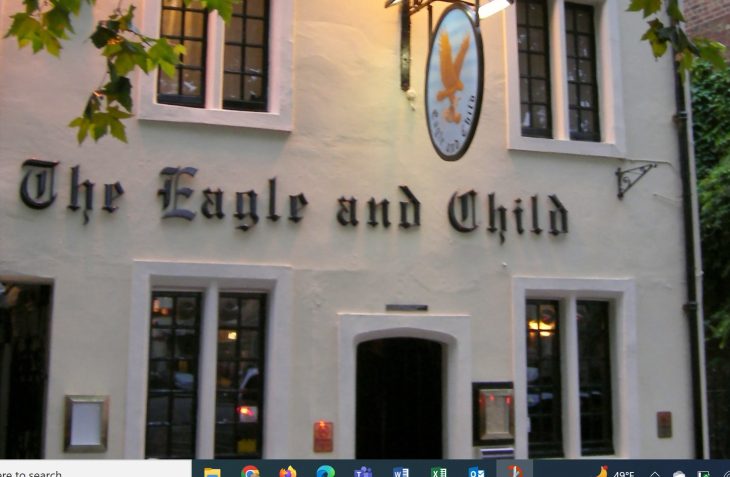
Word of the Day: Pub
Today’s word of the day is pub. A pub, according to www.dictionary.com, is a bar or a tavern, and while that is probably what most people would think of, that definition isn’t exactly precise. Etymonline.com says that pub is first attested in “1859, slang shortening of public house (see public [adj.]), which originally meant ‘any building open to the public’ (1570s), then ‘inn that provides food and is licensed to sell ale, wine, and spirits’ (1660s), and finally ‘tavern’ (1768). Simple public (n.) as short for public house is attested from 1709 and might have been the intermediate form. Pub crawl is attested by 1910 in British slang. Pub rock is from 1973 in England; popular in U.S. from 1976.”
But the story may be more complicated than that. First of all, though, let me say that we are looking at pubs or public houses because on this date in 1840, records show that there were 95,820 licensed public houses in England. Just to put it into context, the estimated population of England was less than 16 million people. That’s about one pub for every 170 residents, including children.
According to Britannica (https://www.britannica.com/topic/public-house), in Tudor England, some innkeepers were required by law to keep stables, and some even were unofficial post offices. These public houses were licensed to sell alcohol and food, and some of them even provided a place to stay overnight.
Over time, brewers bought up or associated themselves with specific public houses, so that if you were at that public house, that is the beer you got. But some public houses remained independent of specific brewers, and they were referred to as free houses. It was not that they gave away food and beer for free; it was that they were free of the control of specific brewers.
Britannica says that the early public houses were identified by simple signs that they placed outside, “such as lions, dolphins, or black swans. Many colourful pub names (e.g., Bag o’Nails, Goat and Compass, and Elephant and Castle) are actually corrupted forms of historical, ecclesiastical, or other proper phrases and titles (e.g., ‘Bacchanals,’ ‘Great God Encompassing,’ and ‘Infanta de Castile,’ respectively). In the 18th century the word Arms was appended to many pub names, indicating that the establishment was under the protection of a particular noble family, although some heraldic signs were references to the original ownership of the land on which the inn or tavern stood.”
I have been to the UK three times, and I have been to a few public houses. Believe it or not, despite what people often say about British food, I like the pub food I have had in England. I have had fish and chips, shepherd’s pie, and meat pie at pubs. I once went to a public house in Scotland and had haggis. It was much better than I expected. I ordered it because when I visit a public house, whether in England or somewhere else, I like to order the local, whatever that happens to be. In fact, I have said to servers, “I’ve never been here before; if I were to never get back here again, what is the one thing I absolutely have to have.” And so far I have not been disappointed.
Of course, the public house, which has food as well as beverages, and which has a place to sit which is not like a restaurant, and which sometimes even has games like darts, can be found outside of England. Pubs have become popular all throughout the United States, among other nations.
One public house that I went to in Oxford, England, was called the Eagle and Child. There are actually something like 25 other public houses in England with the same name, but I’ve just been to the one in Oxford. The Eagle and Child, sometimes called the Bird and Baby, is owned by St. John’s College of Oxford University. It’s been around since at least the 17th century. It served as a center for the Royalist Army during the English Civil War.
But what makes the Oxford Eagle and Child famous today is that it was frequented by the Inklings, the informal literary group at Oxford that featured J. R. R. Tolkien, C. S. Lewis, Owen Barfield, Hugo Dyson, and others, including, sort of unofficially, Dorothy L. Sayers. Unfortunately, the Bird and Baby has been closed since March of 2020, and there is no clear indication of when it will reopen.
The image today is of the front of the Eagle and Child (https://www.flickr.com/photos/7455207@N05/3116035051/).